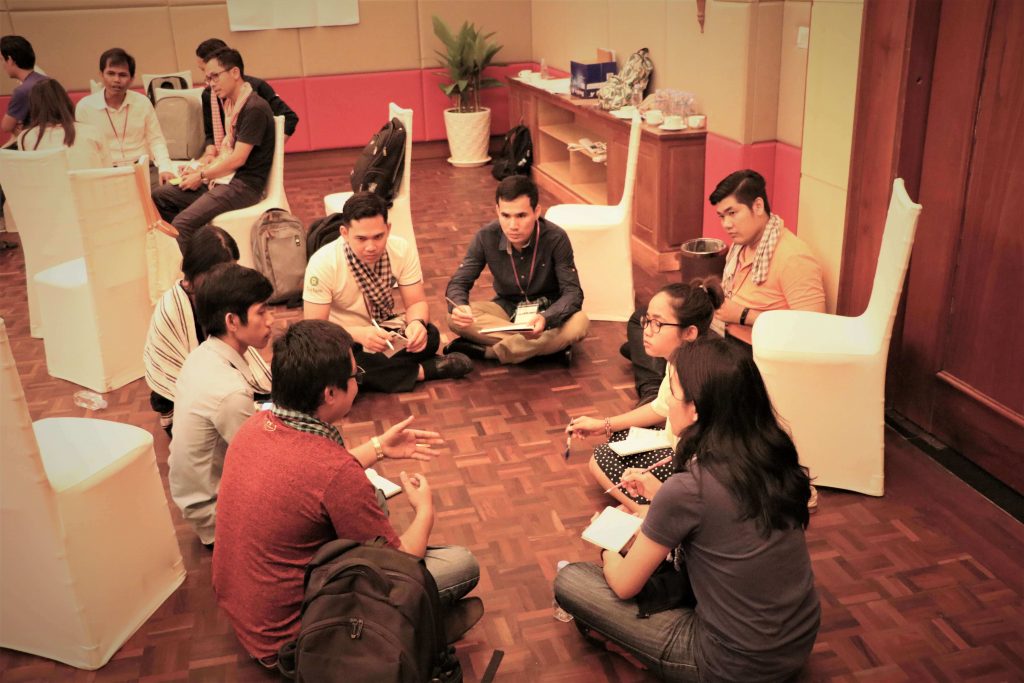Human-centered design (HCD) is a new kind of creative problem solving. It is rooted in an empathetic approach, which places users at the center of the design and implementation process. It begins with understanding the needs of the person you’re designing for, then goes through a process of creative ideation– coming up with lots of new solutions, prototyping those solutions, and ultimately bringing those ideas together into a final product. Because of its user-obsessed approach, HCD has the potential to radically increase the effectiveness of development projects, programs, and social enterprises.
In one of today’s sessions, Morita Akira led camp participants through a human-centered design workshop, teaching the cognitive strategies and methodologies that form the basis of creative design practice. He presented the design process in three parts: problems, ideas for solutions, and prototypes. Mr. Akira explained that design is a circular process, which constantly cycles through new problems, new prototypes, and new solutions. At the middle of this is always the user, or the person you are designing the solution for.

In this workshop, Mr. Akira let participants do most of the talking. Participants broke out into groups and identified their own problems that they wanted to work through for the session. Problems included language barriers, under representation of women in technology fields, and more. Participants practiced applying the design process to the problems by conducting human centered research and brainstorming ideas. As practice for generating ideas prolifically, Mr. Akira asked participants to brainstorm 50 solution ideas to their identified problem! Although it can be difficult to generate so many ideas, participants worked together to generate lists of creative solutions.


One of the most important parts of the design thinking process is to think outside the box – which often means operating outside of your comfort zones and removing constraints that you typically impose on yourself. Ratana Sopha, one of the camp’s speakers who joined participants in the session noted, “it is important not to criticize yourself when you are creating new ideas. It is our tendency to say that an idea is not good enough to be written down or said aloud. But, to get to new solutions, we must generate these jumping off points even if they may not be feasible in the moment.”

Participants then joined a second session on rapid prototyping. In this session, they learned how to take their ideas and test them. Prototypes can take any number of form – they can be replicas or models, pictures, stories, role plays, or anything else that mimics the idea. The important part of a prototype, as Mr. Akira shared, is to “make it feel real.” Participants generated skits, comic strips, and other manifestations of their idea to test and refine them in the design thinking framework. After the camp, participants can take this process of identifying problems, understanding their users, and generating testable prototypes for the challenges facing their communities.

To read more about how human-centered design is being used for development challenges, we recommend viewing Ideo.org’s blog. IDEO is a Silicon Valley based design firm, whose name is often synonymous with human-centered design. One of their claims to fame was the design of the first mouse for the Apple Computer. And then in 2011, they launched a sister organization, a nonprofit arm called Ideo.org. Their mission is to use human-centered design to help alleviate poverty. Ideo.org works with partners in the US and internationally to help them improve the programs, services, or products that they’re delivering– that ultimately go to improve the lives of people in low-income communities. Read more here.


